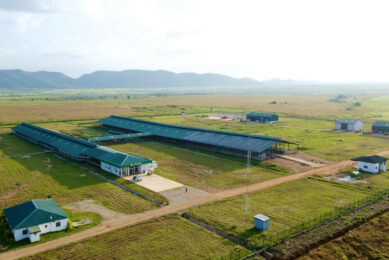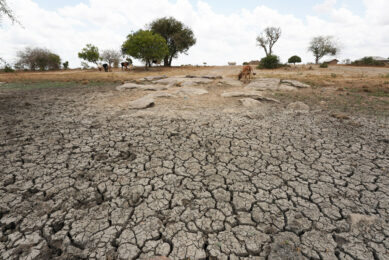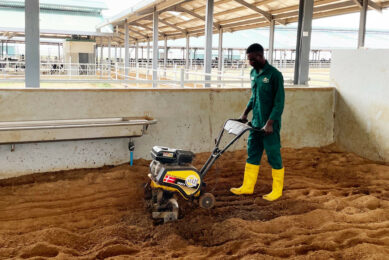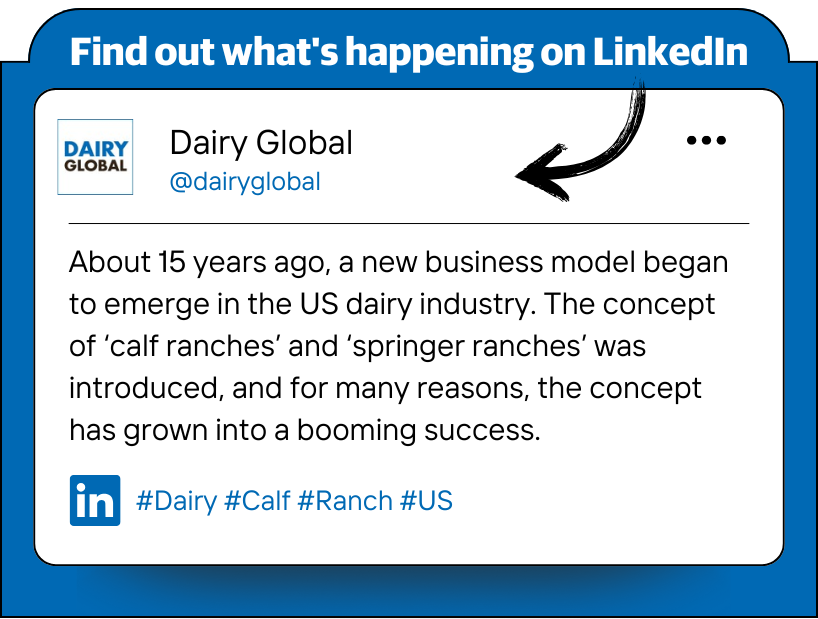How Mafuro Farming is changing the landscape of Zimbabwean dairy
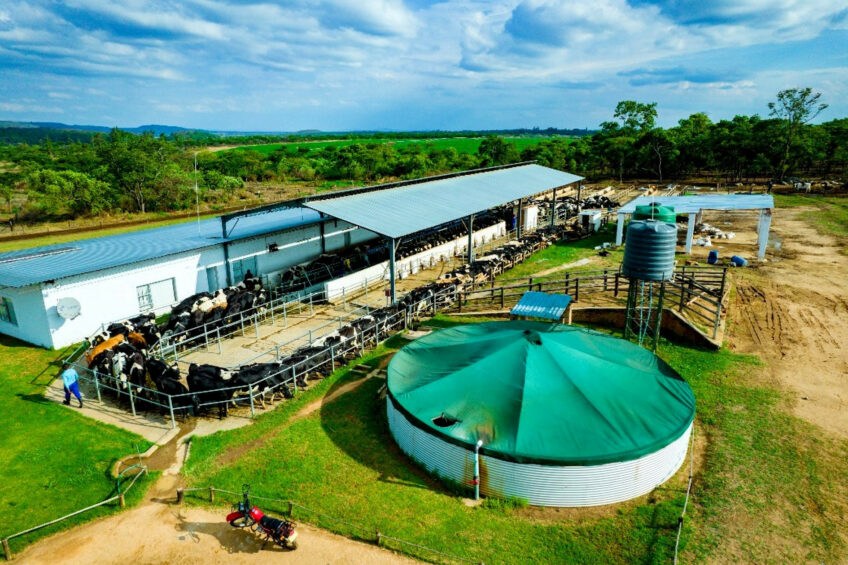
Zimbabwean-born dairy farmer Sean Webster is leading the charge to help the African nation produce more milk to satisfy its strong consumer demand.
To do this, Sean helped set up a dairy farm business back in 2018 called Mafuro Farming, which uses his tried and tested low-cost pasture-based production system. Sean’s philosophy is to produce lower yields of milk with more cows but at a significant cost reduction. Today, the farm, which has 2 separate sites, runs a total of 2,500 dairy cows with 1,400 in the main milking herd.
Zimbabwe was once a net exporter of milk and dairy products, producing over 250 million litres of milk per year in the early 1990s, which was its peak times.
Dairy production
Through a number of political disasters, including the land grabs by the former late president Robert Mugabe, dairy production in Zimbabwe fell drastically. It is now, however, on a surge, hoping to reach self-sufficiency.
The country requires 131 million litres of milk each year to be self-sufficient and is on track to surpass that target by the end of 2025. During 2023, Zimbabwe produced 99.6 million litres and should hit production of 115 million litres in 2024, when the final figures are tallied up.
Zimbabwe has a total dairy herd of around 60,500 animals, of which 39,800 are milking cows. However, it is the cost of production, elevated by high feed costs, erratic electricity supply and veterinary medicine costs, that thwarts a profitable dairy business there.
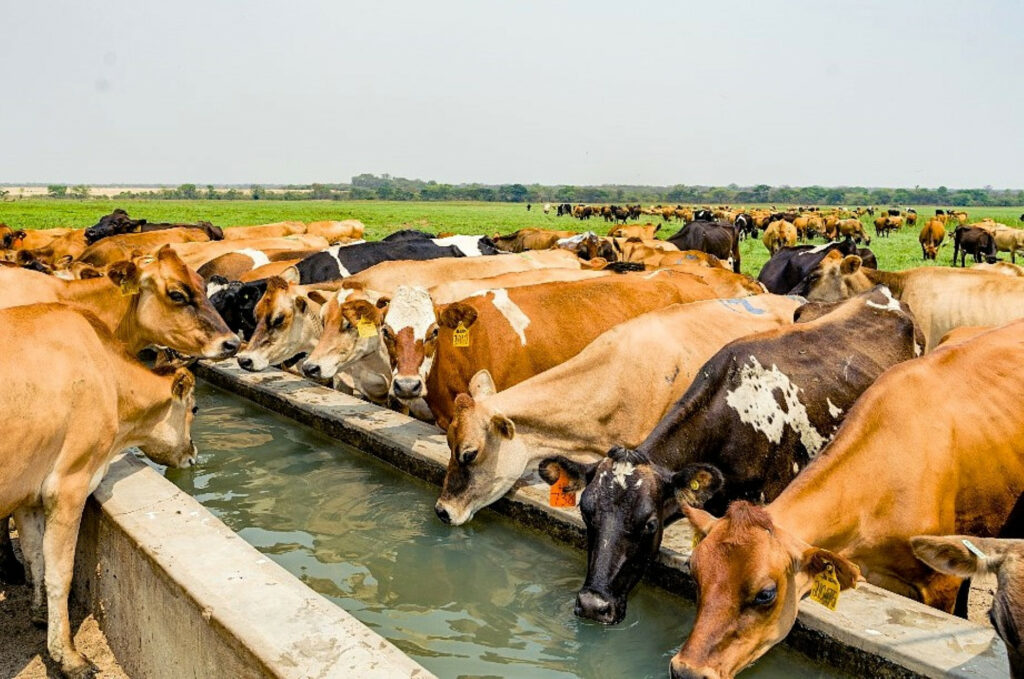
Mafuro dairy farm
Sean was born in Zimbabwe and grew up on the family’s tobacco farm in Mvuruwi, north of Harare. Just before the land grabs, Sean’s father had sold the farm and leased land back, but the family, being white farmers, had to move to Harare when they were no longer welcome on agricultural land.
After a period travelling around New Zealand, where he gained experience milking cows, Sean saw an opportunity to set up a dairy business back in his home land of Zimbabwe. With the aid of the Zimbabwean government, which leased land, and the backing of a number of banks, Mafuro Farming was born, owned by Innscor Africa Limited, a major food producer in Zimbabwe.
“I am the founder and current CEO of Mafuro Farming, which was established in 2018 as a pasture-based dairy production business,” said Sean. “We currently have 600 hectares under irrigation on 2 farms in Zimbabwe; one in Mashonaland and one in Midlands.”
He added: “Right now we have a total of 2,500 dairy cattle in our herd across the 2 farms. There are 1,400 cows milking with an average yield of 18 litres per cow per day throughout the year. Our butterfat is 4.2% and protein is 3.2%. We are breeding a Jersey Holstein cross with an average size of 450kg. I am looking for a smaller-framed, hardier animal that has the best feed conversion possible for our environment and business model,” he said.
With the average cost of production in Zimbabwe hovering around US$0.60 per litre, Sean’s low-cost business model ensures he makes a profit. “I am chasing lower yields with higher margins with our system. All our cows graze outdoors all year round, on pasture and are semi free-range. Our fields at Mafuro consist of a blend of perennial pastures, cereals and legumes.”
Sean said that the cows are moved daily across pastures with the use of temporary electric fences. “We can top up the grazing with a concentrate ration depending on season – high energy in winter and high protein in summer.”
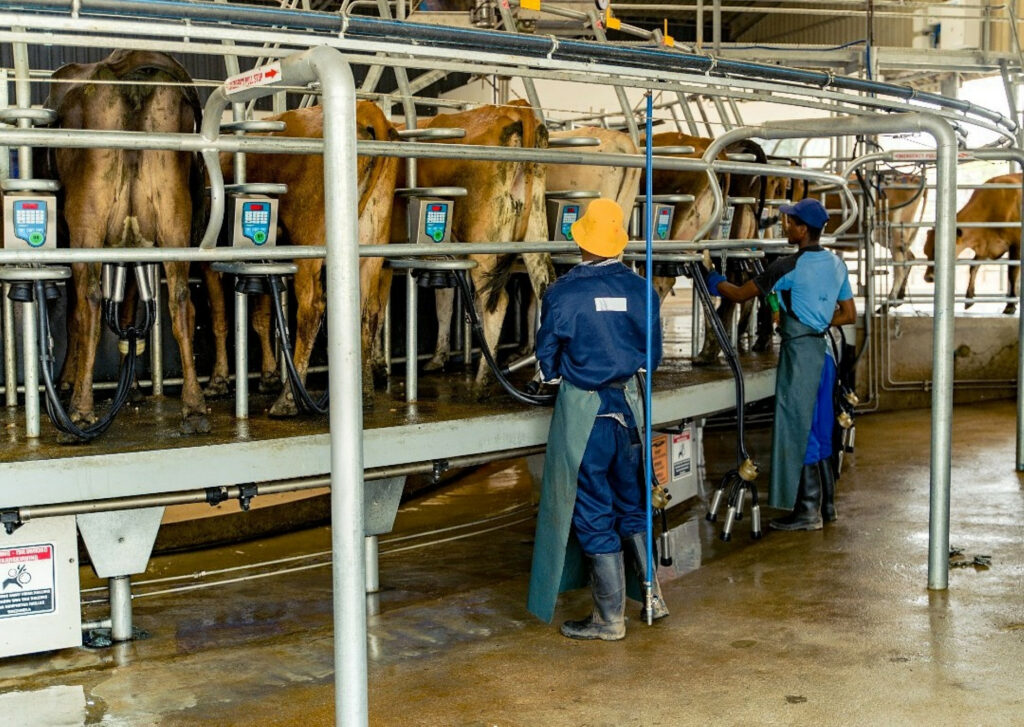
Manure, milk and calves
“Through our pasture-based system we collect and store our liquid cow manure, which is then pumped back onto the fields via our irrigation pivots to use as fertiliser. This is a valuable source of nutrients for our soils, which we must look after to ensure the business model works efficiently,” said Sean.
Heifer calves are kept on the farms as replacements and the bulls are sold or given away to local villagers who need the meat in their diets. Both farms we have 45 staff, excluding senior management and administration staff. The milk is sold to ProDairy, which pays between US$0.60 and US$0.65 per litre.
Milking equipment
Sean has invested heavily in his 2 farms over the years, particularly in the milking machinery. One farm uses a Waikato 30-point swingover parlour system and the other a Waikato 55 cow rotary system. Both use a milk management system by Afi Milk in Israel.
Sean has ambitious plans to expand his business into neighbouring countries that don’t practice the low-cost feed model. “Our system is very competitive and gives us the opportunity to enter those markets,” he said. “Costs of production are increasing worldwide, but we have the business model that can result in higher profits.”
Sean says that, in Zimbabwe, the biggest problems he faces on the dairy farms are inconsistent power supply, as well as a lack of veterinary products, as most are imported and are “hard to come by”. And in terms of finances, he noted that borrowing money in Zimbabwe is expensive and the terms are short, making it difficult to make a start in the sector because dairy is typically a long-term investment.




